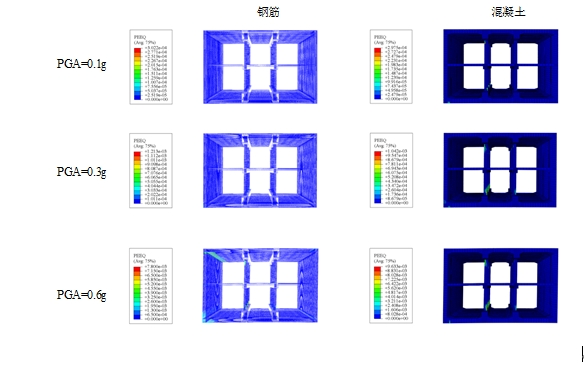Conducting probabilistic risk assessment of the different potential damage level (measured by the casualties, economic loss and repair cost) of post-earthquake buildings is one of the research topics in the construction and development of earthquake resilient cities. However, seismic engineers today fail to provide an effective indicator to quantify the earthquake damage of shallow underground frame structures, thus it impossible to use mathematical models to describe the post-earthquake functions of urban subway station structures. Academician Du Xiuli’s team has been dedicated to the study of seismic damage mechanisms and failure modes of underground structures for years. Team members combined model experiments and numerical simulations to reproduce the seismic collapse mode of the Daikai subway station structure and revealed seismic weak members of shallowly buried underground frame structures. The research findings were published in two papers entitled Seismic Response Mechanism of Underground Frame Structures Based on Dynamic Centrifuge Tests and Collapse Simulation and Failure Mechanism Analysis of the Daikai Subway Station Under Seismic Loads. Researchers believed that the inner column is a weak component of shallow-buried frame structures and its horizontal deformation ability determines the overall structural system. Du Xiuli also pointed out that the overburden pressure caused by vertical seismic motion can reduce the horizontal deformation ability of the middle column component, adversely affecting the seismic resilience of underground frame structures. The team aimed to consider the adverse effects of vertical seismic motion and develop an earthquake resilience indicator for shallow-buried subway station structures with statistical significance.

This research employed an improved pushover analysis method for underground structures that combined horizontal and vertical earthquake ground motion to conduct numerical analysis using three-dimensional finite element models of soil-structure interaction based on several existing subway stations. This research considering the variability of key parameters such as site conditions, structural forms and reinforcement ratio of urban subway stations. Based on the analysis results, the force-displacement seismic performance curve of subway station structures reflecting the coupling effect of horizontal and vertical seismic motion was plotted, the seismic performance level of urban subway station was divided into four levels taking into account the role played by urban subway networks in national socioeconomic development. The team successfully developed a statistically significant seismic performance indicator denoted as the inter-story drift ratio for shallow-buried frame structures of subway stations. These findings were recently published in Earthquake Engineering & Structural Dynamics.

In previous studies, Du Xiuli’s team have proposed an optimal seismic motion intensity measures for resilience analysis of shallow-buried underground frame structures, and developed numerical analysis methods suitable for seismic risk assessment of underground frame structures. The current research filled the gap in the seismic performance indicator of shallow-buried underground frame structures and provided a scientific method for establishing a distribution model for probability evaluation of post-earthquake functional failure in urban subway station structures.




